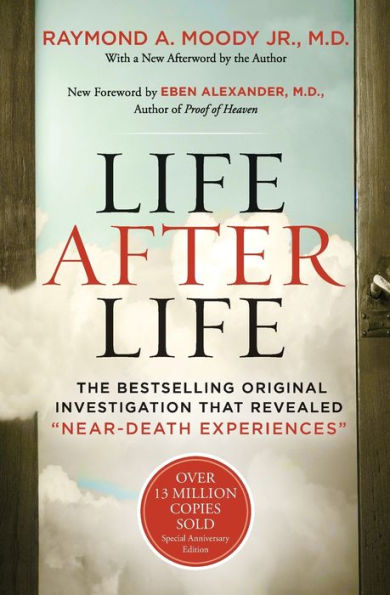This year’s Presidential Election has left television viewers, talk radio listeners, social media followers, and newspaper readers reeling from too-much-information overload. In the same way diners welcome a juice fast after an all-you-can-eat buffet (or small children benefit from a screaming meltdown after a day at a theme park), our American brains are in desperate […]
The groundbreaking, bestselling classic, now available in a special fortieth-anniversary edition that includes a new Foreword from Eben Alexander, M.D., author of Proof of Heaven, and a new Afterword by the author.
Raymond Moody is the “father” of the modern NDE (Near Death Experience) movement, and his pioneering work Life After Life transformed the world, revolutionizing the way we think about death and what lies beyond. Originally published in 1975, it is the groundbreaking study of one hundred people who experienced “clinical death” and were revived, and who tell, in their own words, what lies beyond death.
A smash bestseller that has sold more than thirteen million copies around the globe, Life After Life introduced us to concepts—including the bright light, the tunnel, the presence of loved ones waiting on the other side—that have become cultural memes today, and paved the way for modern bestsellers by Eben Alexander, Todd Burpo, Mary Neal, and Betty Eadie that have shaped countless readers notions about the end life and the meaning of death.
The groundbreaking, bestselling classic, now available in a special fortieth-anniversary edition that includes a new Foreword from Eben Alexander, M.D., author of Proof of Heaven, and a new Afterword by the author.
Raymond Moody is the “father” of the modern NDE (Near Death Experience) movement, and his pioneering work Life After Life transformed the world, revolutionizing the way we think about death and what lies beyond. Originally published in 1975, it is the groundbreaking study of one hundred people who experienced “clinical death” and were revived, and who tell, in their own words, what lies beyond death.
A smash bestseller that has sold more than thirteen million copies around the globe, Life After Life introduced us to concepts—including the bright light, the tunnel, the presence of loved ones waiting on the other side—that have become cultural memes today, and paved the way for modern bestsellers by Eben Alexander, Todd Burpo, Mary Neal, and Betty Eadie that have shaped countless readers notions about the end life and the meaning of death.

Life After Life: The Bestselling Original Investigation That Revealed "Near-Death Experiences"
208
Life After Life: The Bestselling Original Investigation That Revealed "Near-Death Experiences"
208Paperback(Anniversary)

Product Details
| ISBN-13: | 9780062428905 |
|---|---|
| Publisher: | HarperCollins |
| Publication date: | 09/08/2015 |
| Edition description: | Anniversary |
| Pages: | 208 |
| Sales rank: | 31,781 |
| Product dimensions: | 5.10(w) x 7.50(h) x 0.80(d) |
